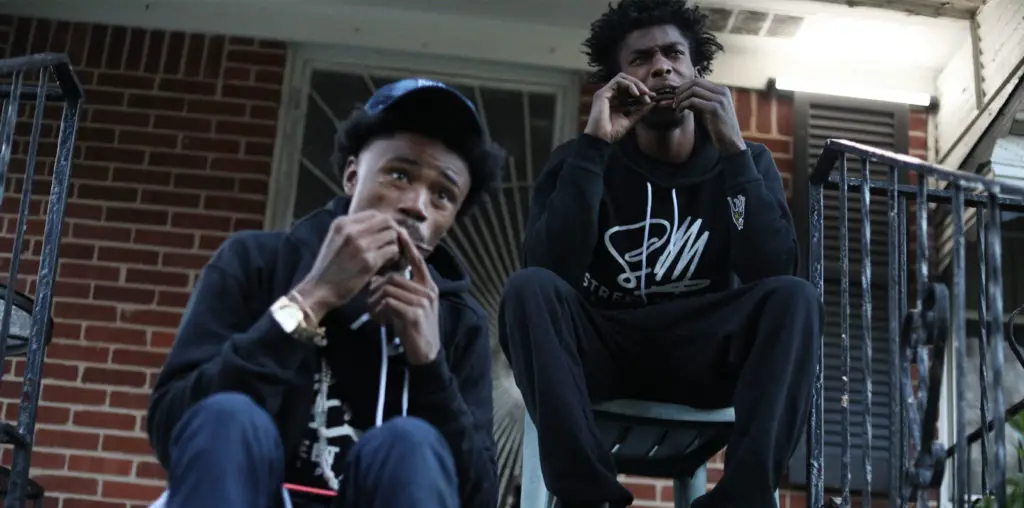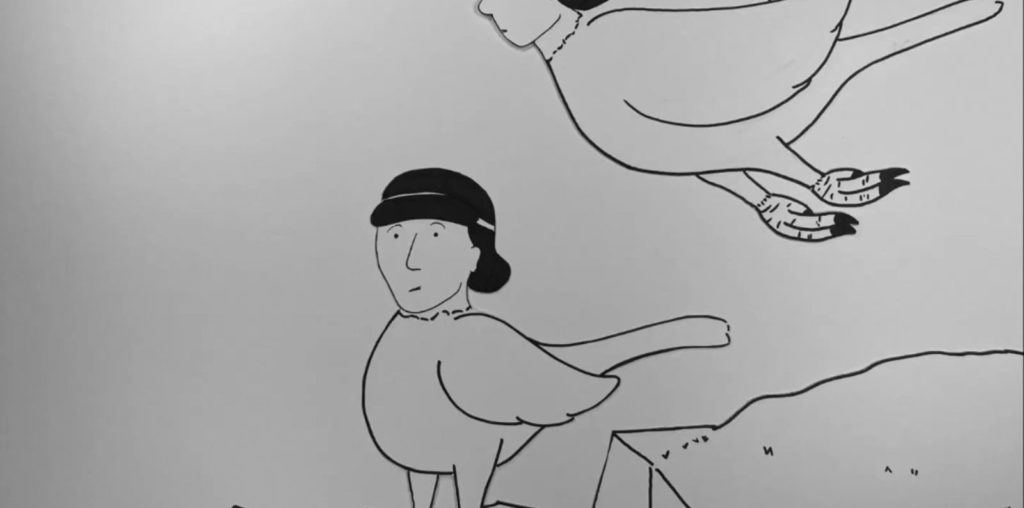
BOOTLEG FILES 263 “Teenagers from Outer Space” (1959 sci-fi cult film favorite).
LAST SEEN: Available on several online video sites.
AMERICAN HOME VIDEO: It has been released by labels specializing in public domain films.
REASON FOR BOOTLEG STATUS: A long-expired copyright.
CHANCES OF SEEING A COMMERCIAL DVD RELEASE: Not likely, given its lack of copyright protection.
Yes, there really is a film called “Teenagers from Outer Space.” And, yes, no one is going to mistake it for “Star Wars.” But, no, this 1959 Grade Z effort isn’t as awful as many people would like to insist. Admittedly, it has all of the vices one associates with cheapo sci-fi of the late 1950s. But it also has all of the genre’s virtues, most notably in its ability to provide genuine entertainment – you may giggle at times for the wrong reasons, but you’ll never get bored watching it.
“Teenagers from Outer Space” is also part of a sad biography surrounding its creator, Tom Graeff, who never achieved any degree of success in his lifetime. There is great irony in realizing that the man who brought us a high degree of pleasure with this film lived and died under tragic circumstances.
“Teenagers from Outer Space” opens with an alien spacecraft landing in a desert area of the American Southwest (it’s never quite clear where the movie takes place). A group of aliens who look like white men in bizarre jumpsuits exit their craft and begin measuring the atmosphere. But they are not alone – a frisky dog comes by and barks at them. One of the aliens takes out a ray gun and disintegrates the pooch, leaving a canine skeleton. Another alien – a visibly young and strikingly handsome extra-terrestrial named Derek (yes, Derek!) examines the doggie bones and discovers a dog tag. He quickly determines that the Earth is inhabited by intelligent life.
However, his colleagues aren’t interested in that notion – they feel the Earth is a perfect place to breed gargons, a species that bears a striking resemblance to the lobster and which is the main source of nutrition for the men from outer space. The gargan supposedly grows to epic proportions, so the aliens decide to leave one chained up in a convenient cave to see if it will adapt to the Earth.
But Derek insists that bringing the gargons to the planet is wrong, so he attempts to start a mutiny. He is quickly overtaken (no mean feat, considering no one joins his uprising) and faces the prospect of a court martial. While the aliens are preparing to depart, Derek bolts and runs away. Another alien, a scowling type name Thor, is assigned to take a ray gun and bring Derek back alive.
Derek uses the ID tag on the vaporized dog to find shelter at the address belonging to the dog’s owners. Those happy folks are the beautiful Betty (Dawn Bender) and her tubby grandfather, who is known simply as Gramps. Although Derek shows up wearing a ludicrous jump suit and has no visible means of financial support, Betty and Gramps decide there’s no problem in renting him a spare room that became vacant with the convenient college-bound departure of Betty’s brother. As luck would have it, the clothing that Betty’s brother left behind fits Derek perfectly.
The remainder of “Teenagers from Outer Space” is simply one extended chase, with the ray gun-toting Thor hunting for Derek while Derek tries to stay one step ahead of his pursuer. Derek gets plenty of help from Betty, Gramps, an elderly doctor, a thick waisted nurse, a none-too-bright reporter and some of the stupidest police officers in movie history. There is also the matter regarding the gargon in the cave – it takes an unexpectedly strong liking to the Earth’s atmosphere and grows to the size of an apartment building. Even worse is the prospect of a new alien invasion.
Much of the charm in “Teenagers from Outer Space” lies in the vim and vigor that reinforces its patent absurdity, particularly in the second half when the evil Thor spends too much time disintegrating everyone who comes into his path. British actor Bryan Grant sails into his role of the evil extra-terrestrial with a scowling, visceral energy that one might associate with “Richard III” rather than no-budget sci-fi.
In contrast to his excess of evil, David Love and Dawn Bender make a genuinely appealing couple. Despite his curious insistence on abrupt speech patterns (his dialogue readings could have easily inspired the Coneheads sketches on “SNL”) and her willingness to accept too many unexplained happenings, the characters convey a surprising depth of sincerity. When they finally kiss during the midst of crisis, one can easily feel like a voyeur as they go to lip-locking town.
Actually, that smooch was pretty fine acting. Love’s real name was Chuck Roberts and he was reportedly Tom Graeff’s boyfriend. There is no record of the actor having additional film roles after “Teenagers from Outer Space,” and for many years people erroneously assumed Graeff cast himself as Derek (he’s in the film, also under a pseudonym, playing the reporter).
So who was Tom Graeff? He was an aspiring filmmaker whose career got off to a promising start in the early 1950s, when he directed and produced a couple of promotional short films. He attempted to create a feature film called “The Noble Experiment” in 1955, but that effort was not commercially successful and disappeared quickly (it was considered lost for many years, but a print has been located and is being restored).
Graeff enjoyed a stint as an assistant to Roger Corman on “Not of This Earth” (1955) and even played a bit part in that flick. Inspired by Corman’s guerrilla-style low-budget filmmaking approach, Graeff wrote a screenplay called “Killers from Outer Space.” Bryan Grant invested $5,000 in the film in exchange for playing Thor and for casting his wife, German-born actress Ursula Pearson, in a small role as a secretary whose employer is vaporized in the ray gun rampage. Graeff shot the film from late 1956 through early 1957. The total budget for the film came to $14,000, and this had a fairly obvious impact on the film’s special effects (which could charitably be described as ridiculous, especially when the giant lobster is on the loose). In fact, money was so tight that the climactic alien invasion is never seen – the characters look up at the sky and talk about spaceships.
Incredibly, Warner Bros. picked up the rights to the movie, but changed the title to “Teenagers from Outer Space.” But the studio did not give the film a serious release. Instead, it was packaged with “Gigantis the Fire Monster” (a sloppy U.S. dubbing of “Godzilla Raids Again”) and dumped on the drive-in and grindhouse circuit before being sold to television. The film’s odd title and its place in the genre of no-budget/high-imagination atomic age sci-fi ensured it would never be taken seriously.
At this point, Graeff’s life took a very strange turn. He insisted that God spoke through him and he tried to have his name legally changed to Jesus Christ II. A series of arrests for disorderly conduct and an enforced hospitalization created embarrassment, and Graeff was viewed as a pariah in the film world. Outside of an editing assignment on a 1964 cheapo sci-fi called “The Wizard of Mars,” no one would hire Graeff. In 1968, his attempts to advertise the availability of a new screenplay created problems with false claims of having director Robert Wise and actor Carl Reiner attached to the project. Graeff committed suicide in 1970.
Warner Bros. did not bother maintaining the rights to “Teenagers from Outer Space” and Graeff’s estate was most likely unaware of its copyright renewal needs. As a result, the film lapsed into the public domain and has become widely duped. Its public domain status has set it up for endless cheap laughs – it was the subject of ridicule on “Mystery Science Theater 3000″ and “Whose Line is it Anyway?” – but it also helped to cultivate a small cult following. A web site called TomGraeff.org, a MySpace fan site, and an in-the-works documentary on Graeff’s life have helped bring credibility to the filmmaker and his best-known work.
If “Teenagers from Outer Space” is not an example of great filmmaking, it is a prime example of pure diversion and it clearly doesn’t deserve to be considered as a bad joke.
IMPORTANT NOTICE: The unauthorized duplication and distribution of copyright-protected material, either for crass commercial purposes or profit-free s***s and giggles, is not something that the entertainment industry appreciates. On occasion, law enforcement personnel boost their arrest quotas by collaring cheery cinephiles engaged in such activities. So if you are going to copy and distribute bootleg videos and DVDs, a word to the wise: don’t get caught. Oddly, the purchase and ownership of bootleg videos is perfectly legal. Go figure!



Gramps was played by Harvey B. Dunne, by the way, familiar to anyone who’s seen Bride Of The Monster.